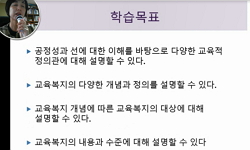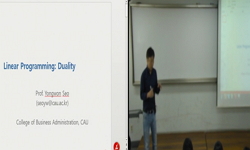목적 본 연구는 단위학교의 교육복지 운영과정을 비교분석하고 한계점을 파악하여 개선방안을 제시하는데 목적이 있다. 방법 교육복지사 배치 여부, 학교급, 학교소재지, 학생 수를 고려...
http://chineseinput.net/에서 pinyin(병음)방식으로 중국어를 변환할 수 있습니다.
변환된 중국어를 복사하여 사용하시면 됩니다.
- 中文 을 입력하시려면 zhongwen을 입력하시고 space를누르시면됩니다.
- 北京 을 입력하시려면 beijing을 입력하시고 space를 누르시면 됩니다.

교육복지사 배치 여부에 따른 단위학교 교육복지 운영사례 비교분석 = A Comparative Case Study on the Operation Process of the Education Welfare at School according to the Placement of Educational Welfare Workers
한글로보기https://www.riss.kr/link?id=A108213854
- 저자
- 발행기관
- 학술지명
- 권호사항
-
발행연도
2022
-
작성언어
-
- 주제어
-
KDC
373
-
등재정보
KCI등재
-
자료형태
학술저널
-
수록면
211-225(15쪽)
- DOI식별코드
- 제공처
-
0
상세조회 -
0
다운로드
부가정보
국문 초록 (Abstract)
목적 본 연구는 단위학교의 교육복지 운영과정을 비교분석하고 한계점을 파악하여 개선방안을 제시하는데 목적이 있다.
방법 교육복지사 배치 여부, 학교급, 학교소재지, 학생 수를 고려하여 8개 대상학교, 16명의 교육복지 담당 인력을 대상으로 서면 사례조사와 초점집단 인터뷰를 진행하였다. 서면 사례조사와 초점집단 인터뷰 질문은 CIPP모형에 기반하여 구성되었으며, 인터뷰는 2그룹으로 나누어 진행되었다. 수집된 자료는 CIPP모형에 근거하여 질적 분석을 하였다.
결과 단위학교 교육복지 운영과정의 양태는 교육복지사 배치 여부에 따라 차이가 있었다. 첫째, 교육복지사가 배치되어 있는 경우, 다양한 교육복지 욕구충족에 초점을 두는 보편적 복지를 실현하고자 노력한 반면, 미배치학교는 교육복지의 대상 및 범위를 특정계층 학생에게 초점을 두었다. 둘째, 대부분의 교육복지사 배치학교는 조직, 예산편성, 배치된 인력의 기능과 역할 등이 체계적으로 조직화 되어 효과적으로 작동하는 반면, 미배치학교는 제한적인 인력과 조직, 예산의 투입으로 어려움이 확인되었다. 셋째, 교육복지사 배치학교의 경우, 학교 내⋅외 협력체제를 바탕으로 다양한 영역의 지원이 이루어지는 반면, 미배치학교는 대상 학생 선별, 사례관리, 외부자원과의 연계 등에 어려움을 드러냈다. 마지막으로 교육복지 성과와 관련하여, 교육복지사 배치학교는 학생의 성장, 지역사회의 변화, 교육의 형평성 제고 등을 성과로 제시한 반면 미배치학교는 학업성취도 향상, 또래 관계 긍정적 변화 등 가시적인 변화를 교육복지 성과로 제시하였다.
결론 단위학교는 모든 학생을 잠재적 교육복지의 대상으로 설정해야 한다. 일상적 교육활동에서의 교육복지 실현을 위하여, 조직적 기반으로 ‘통합성장지원팀’을, 내용적 기반으로 ‘통합성장사례관리’를, 전문성 기반으로 ‘협업적 거버넌스’를 강화해야 한다.
다국어 초록 (Multilingual Abstract)
Objectives The purpose of this study is to compare the operation process of educational welfare at schools, identify limitations, and suggest improvement methods. Methods Considering the placement of educational workers, school level, school locati...
Objectives The purpose of this study is to compare the operation process of educational welfare at schools, identify limitations, and suggest improvement methods.
Methods Considering the placement of educational workers, school level, school location, and number of students, focus group interview and written investigation were conducted on 8 target schools, 16 school faculties. Written investigation and focus group interview questions were constructed based on the CIPP model. The collected data were analyzed based on the CIPP model.
Results The educational welfare operation process of the unit school differed depending on the placement of educational workers. First, schools with educational workers tried to realize universal welfare that focuses on satisfying various educational welfare needs for all students, while schools without educational workers focused on the target and scope of educational welfare for students of a specific class. Second, most schools with educational workers were systematically organized into departments, budgeting, and functions and roles of manpower, while schools without educational workers had difficulty operating due to limited manpower, organization, and budget input. Third, in the case of schools with educational workers, various types of support are provided based on the school's internal and external cooperation system, while schools without educational workers have difficulty in selecting target students, case management, and linking with external resources. Finally, regarding the achievements of educational welfare, schools with educational workers presented visible achievements such as student growth, community change, and improvement of educational equity, while non-arranged schools presented visible achievements such as improved academic achievement and positive peer relations.
Conclusions Schools should view all students as potential targets of educational welfare. In order to realize educational welfare in daily educational activities, ‘integrated growth support team’ should be established or strengthened on an organizational basis, ‘integrated growth case management’ on a content basis, and ‘cooperative governance’ on a professional basis.
목차 (Table of Contents)
- Ⅰ. 서론
- Ⅱ. 연구 방법
- Ⅲ. 연구결과
- Ⅳ. 결론 및 제언
- 참고문헌
- Ⅰ. 서론
- Ⅱ. 연구 방법
- Ⅲ. 연구결과
- Ⅳ. 결론 및 제언
- 참고문헌
동일학술지(권/호) 다른 논문
-
남자 신입 대학생의 인유두종 바이러스 예방접종 의도 영향요인
- 학습자중심교과교육학회
- 장수현(Su Hyun Jang)
- 2022
- KCI등재
-
대학생의 진로결정자기효능감이 역기능적 진로관여사고와 진로스트레스에 미치는 효과
- 학습자중심교과교육학회
- 이순희(Soon Hee Lee)
- 2022
- KCI등재
-
어린이집 원장의 아동학대 신고의무자 역할수행 경험 탐색
- 학습자중심교과교육학회
- 이정은(Jung Eun Lee)
- 2022
- KCI등재
-
인공지능 시대의 직업담론에 따른 사회과교육의 실천전략 탐색
- 학습자중심교과교육학회
- 박지수(Jisu Park)
- 2022
- KCI등재




 KCI
KCI 스콜라
스콜라






